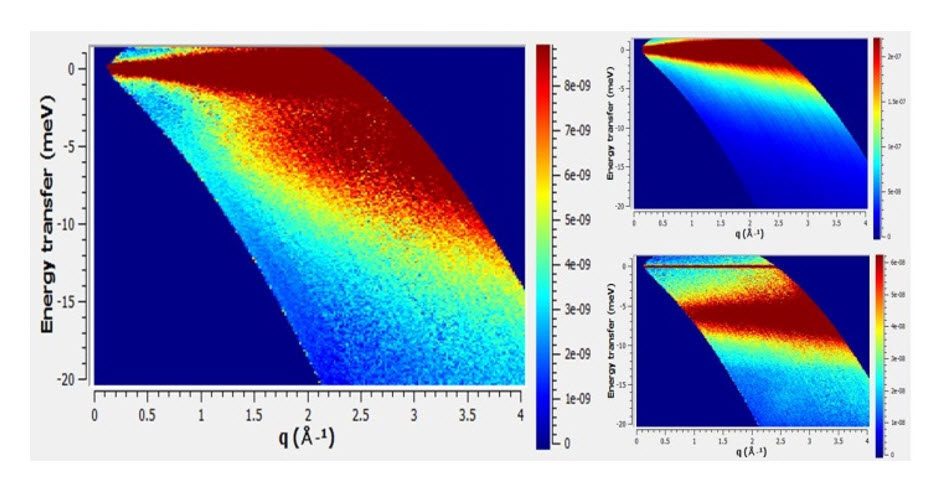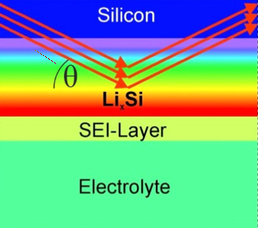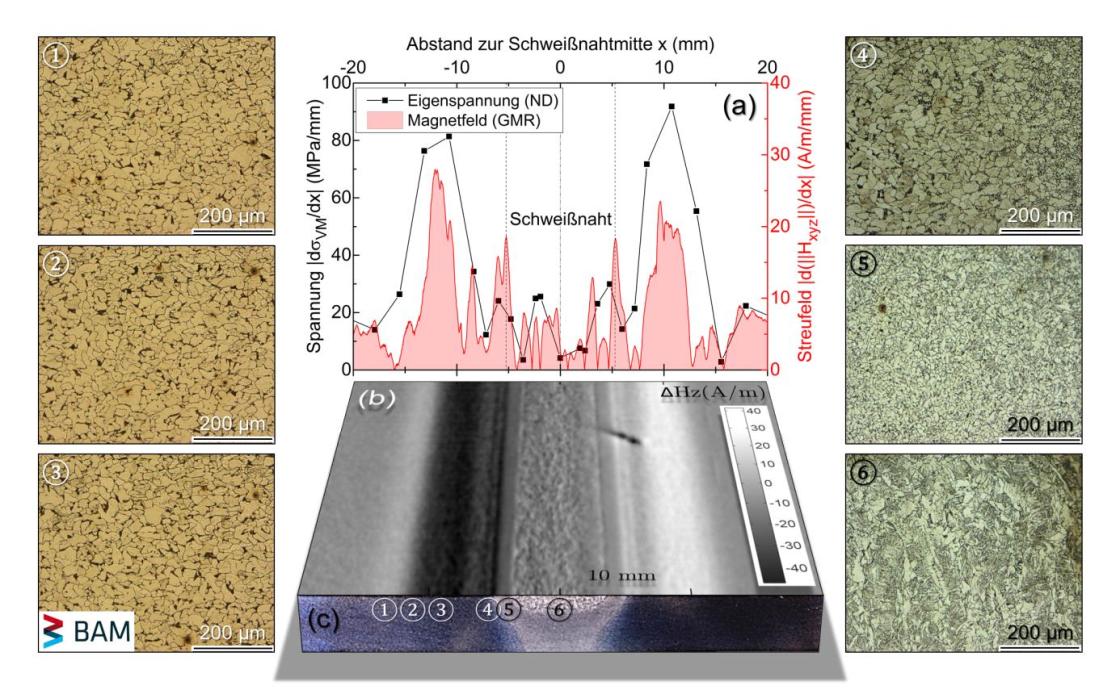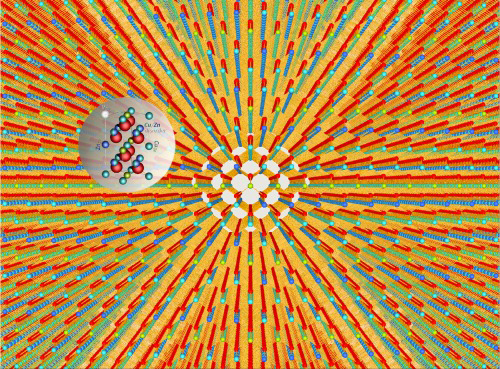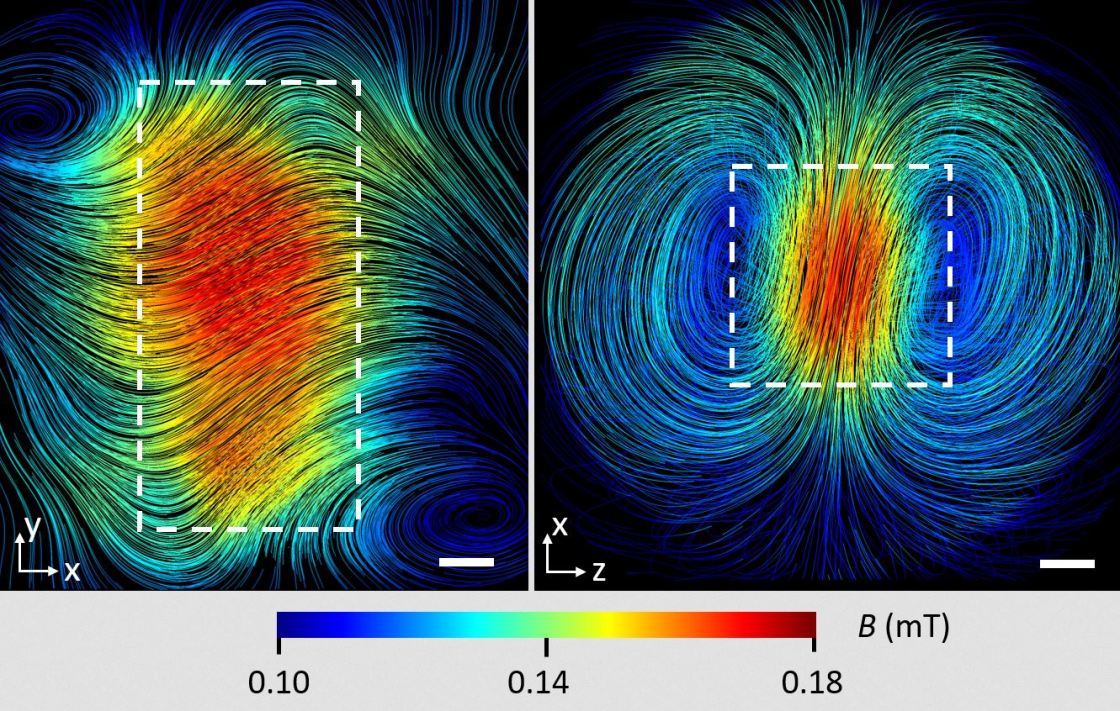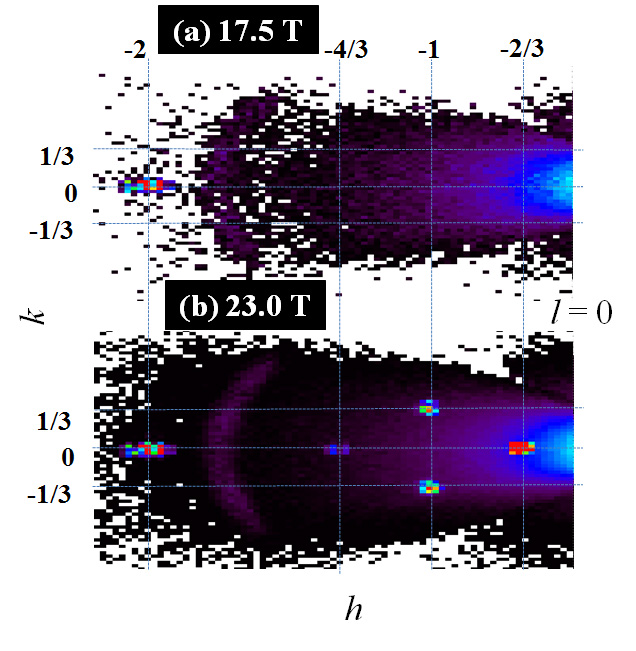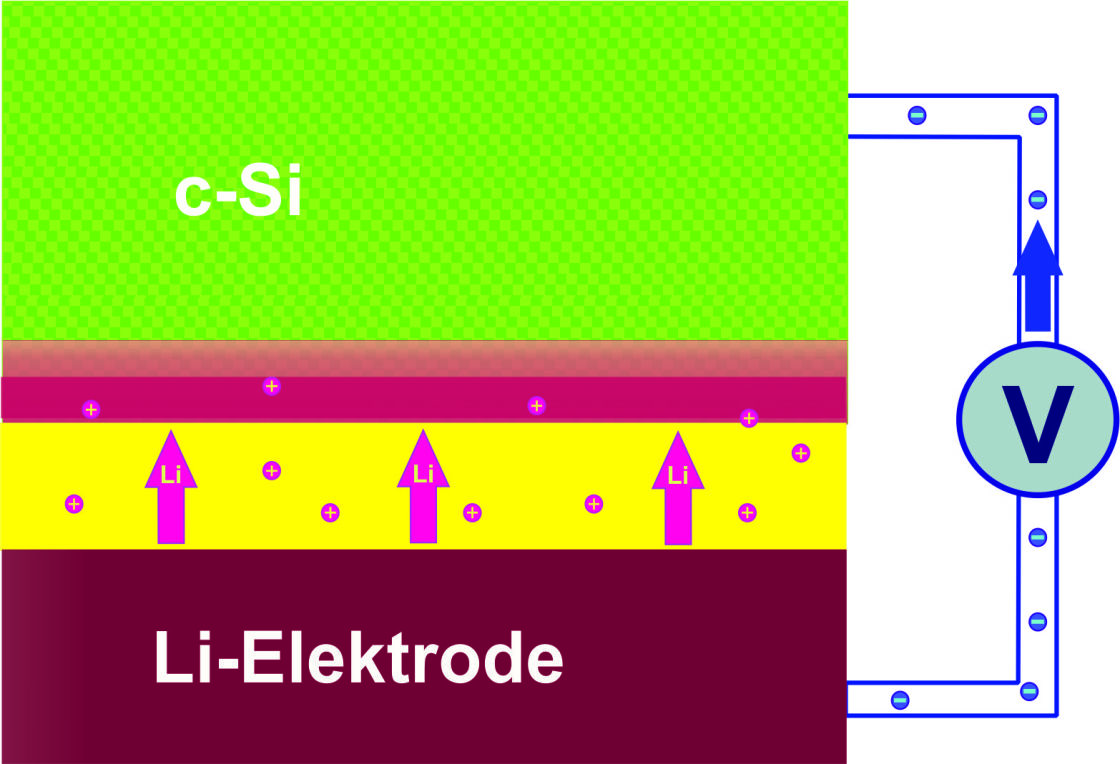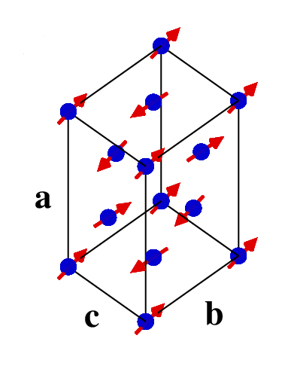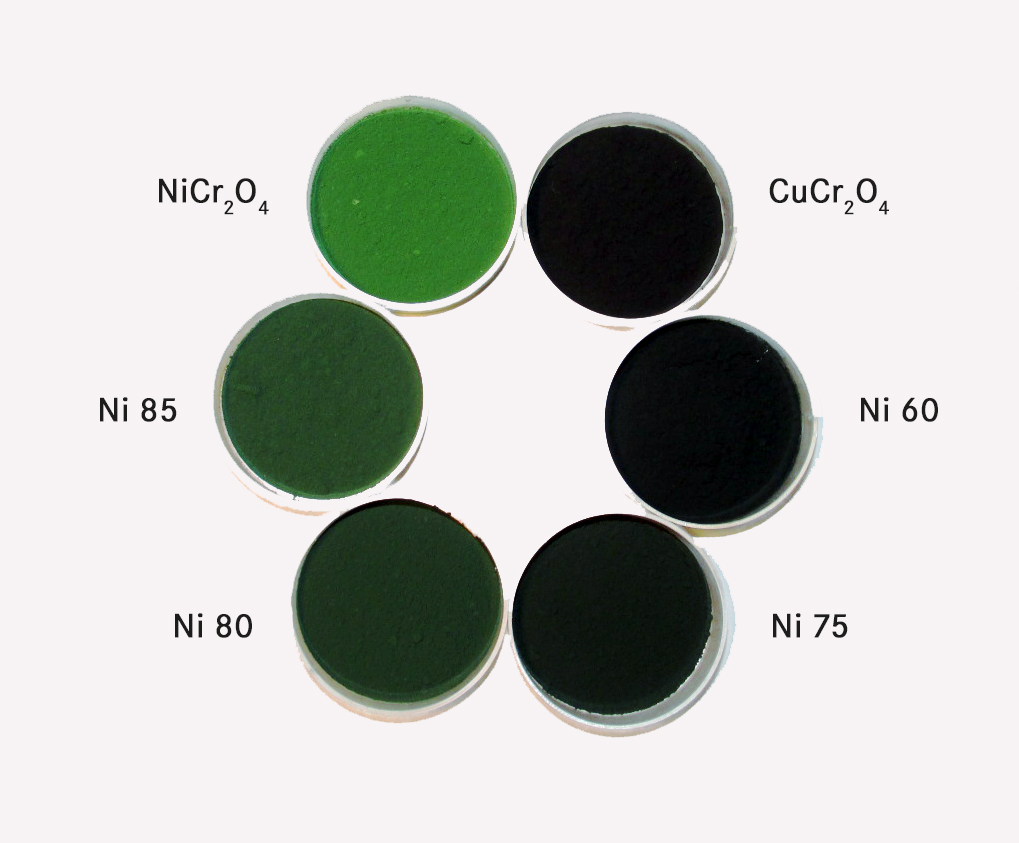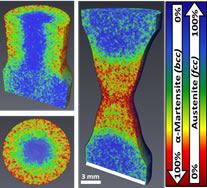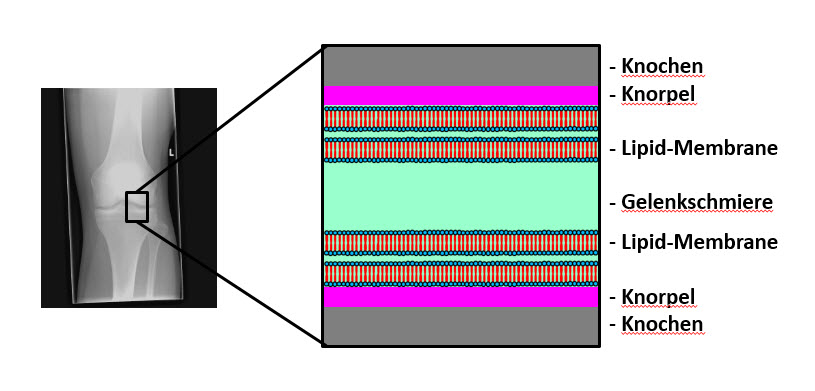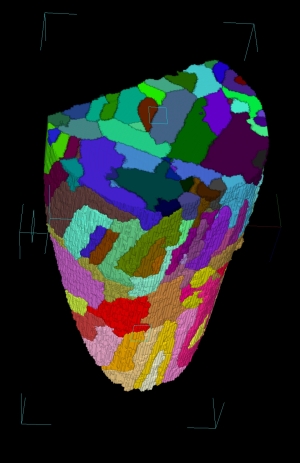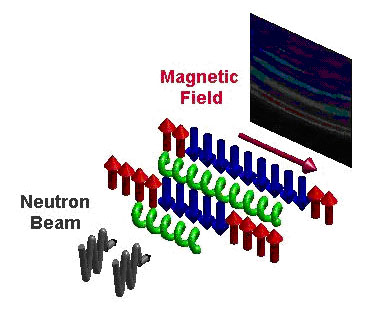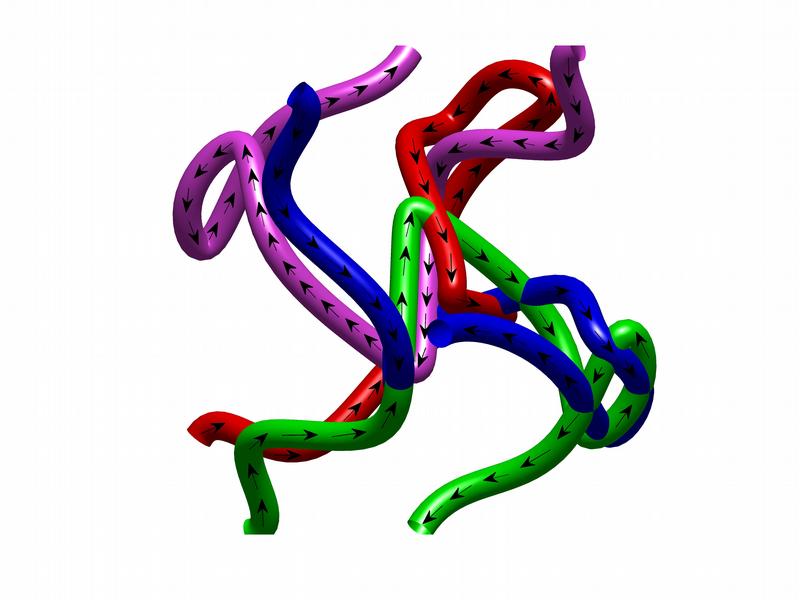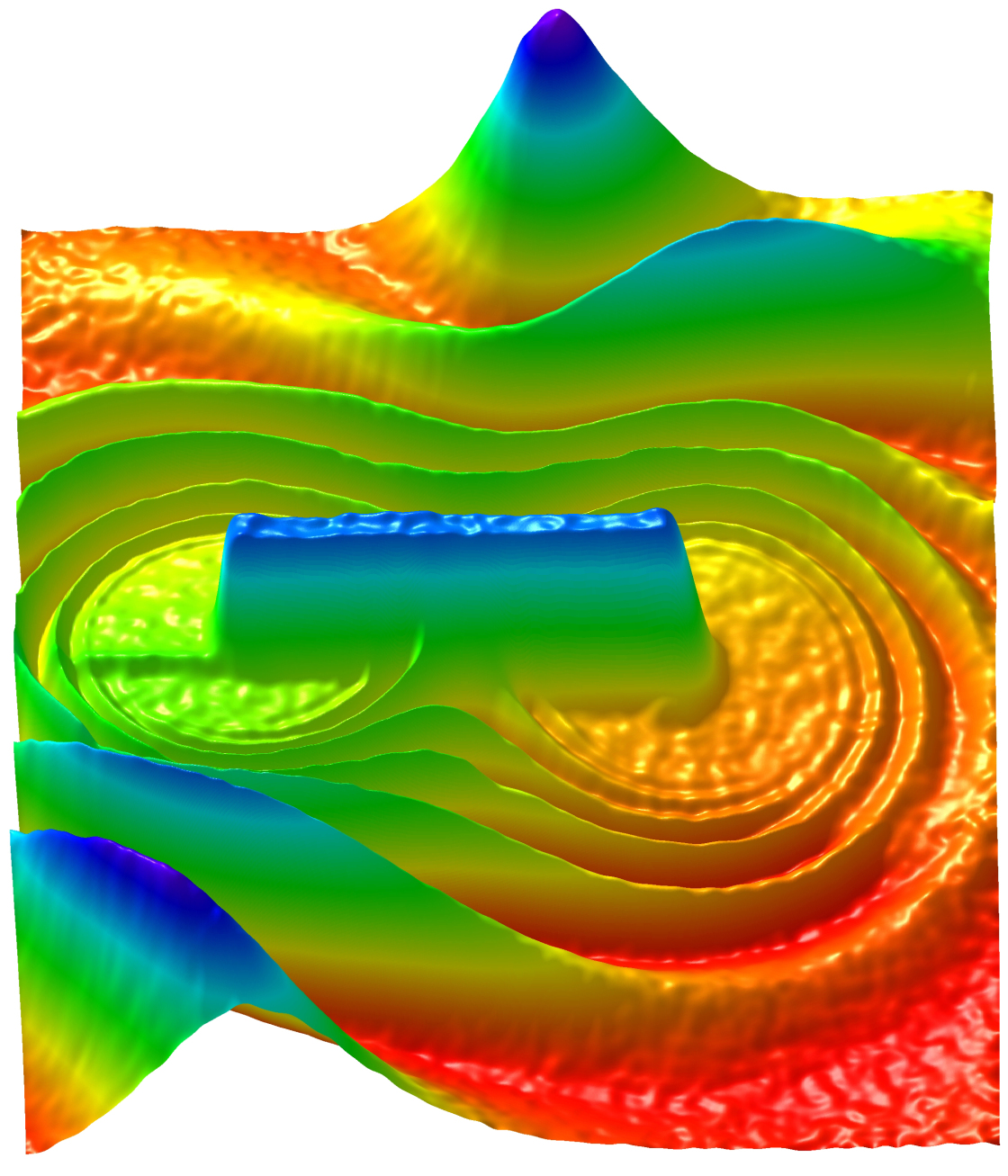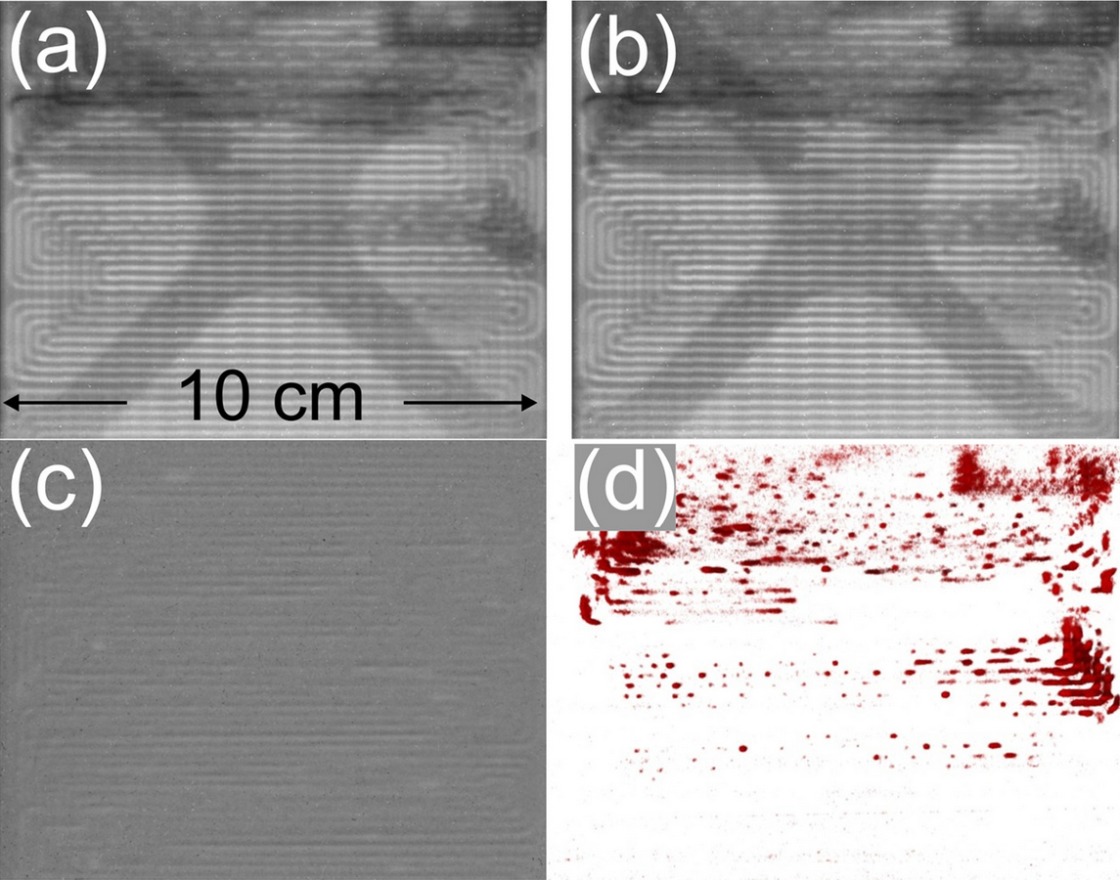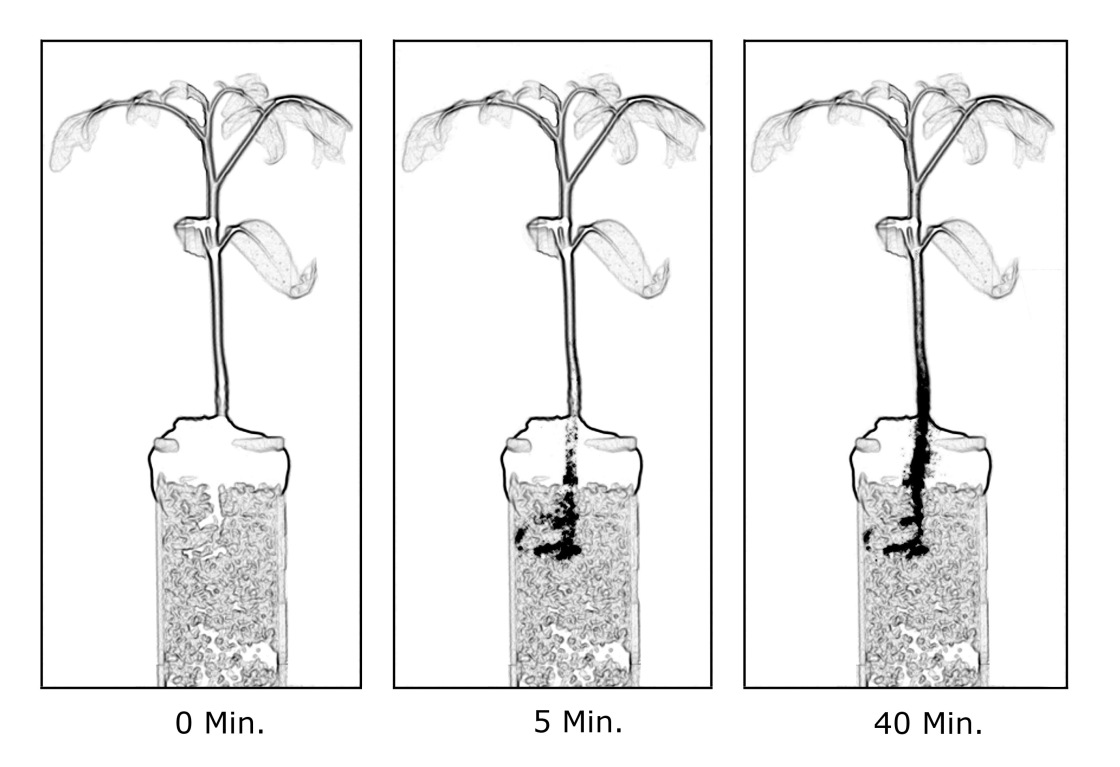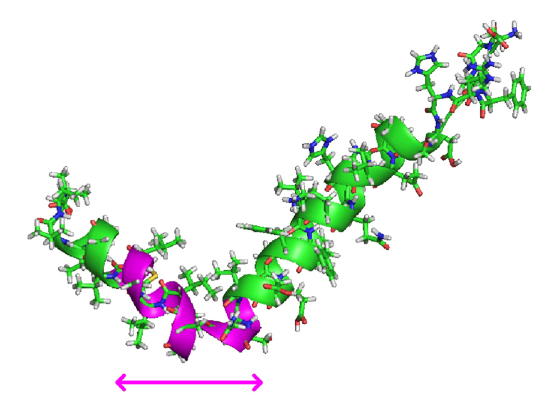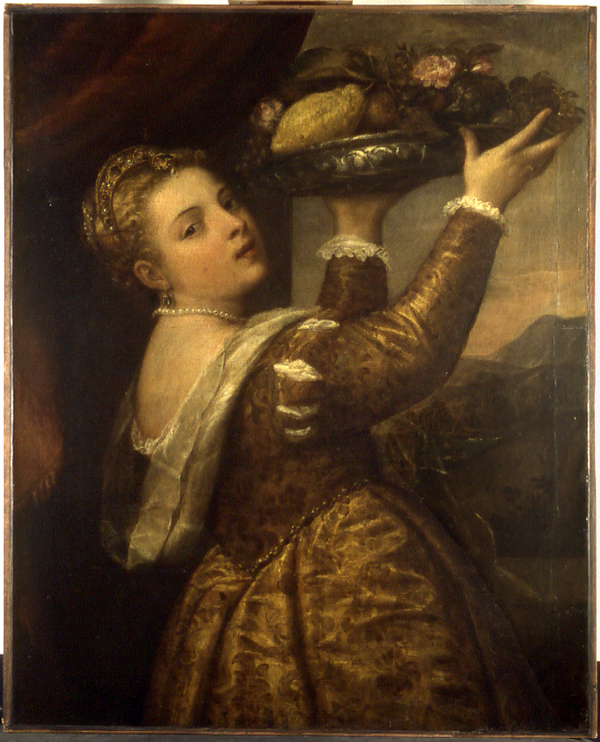Decommissioning Research Reactor BER II
Neutron research at BER II
Examples from research
2019: A new state of water: ordered like ice, but still mobile
Water is liquid at room temperature. However, enclosed in the tiny channels of a zeolite structure, the water flows much more viscously. At the time-of-flight spectrometer NEAT at the BER II neutron source, this was analysed and a new state of matter of water has been discovered: In the nanostructures of the zeolite structure, the water molecules arrange themselves as in the ice crystal, but remain mobile as in a liquid. The confinement intensifies cooperative interactions between water molecules. The results are important for the design of zeolite storage devices, which are used as energy-saving air conditioning units for cooling.
The Journal of Physical Chemistry Letters (2019) Doi: 10.1021/acs.jpclett.9b02303
2019: Batteries with silicon anodes: neutrons reveal how surface structures reduce capacity
Theoretically, anodes made of silicon could store ten times more lithium ions than the graphite anodes that have been used for so many years now in commercial lithium batteries. Yet, so far, the capacity of silicon anodes drops radically after every charge-discharge cycle. An HZB team has now explained with neutron experiments at BER II in Berlin and at the Institut Laue-Langevin in Grenoble what happens at the surface of the silicon anode during charging and what processes reduce their charging capacity. In their neutron experiments, they observed how a blocking layer forms on the silicon surface during charging, thus preventing the penetration of lithium ions. > to the News
Publication: Energy Storage Materials (2019. Doi: 10.1016/j.ensm.2018.11.032
2018: User research at BER II: New insights for high-temperature superconductivity
Even after thirty years of research, many properties of high-temperature superconductors remain a mystery. Certain cuprate superconductors, for example, tend to develop a magnetic “stripe order”. A Danish research team studied these stripes in greater detail using the neutrons at the high-resolution spectrometers FLEXX (HZB) and ThALES (ILL, Grenoble). Their results help in further deciphering the phenomenon of high-temperature superconductivity. > to the News
Publication: Phys. Rev. Letters (2018): Doi: 10.1103/PhysRevLett.120.037003
2018: Neutron research helps in the development of nondestructive test methods
One of the first signs of material fatigue is the appearance of adjacent areas of very different residual stress inside the bulk of the material. At the neutron source BER II at HZB, a team from the Bundesanstalt für Materialforschung und -prüfung (BAM) analysed the residual stresses of ferromagnetic steel weld seams. Their results are helping to improve nondestructive electromagnetic test methods. > to the News
Publication: Journal of Nondestructive Evaluation, 2018. Doi 10.1007/s10921-018-0522-0
2018: Kesterite solar cells - on the way to higher efficiencies
Kesterites are semiconductor compounds consisting of several, abundant elements. They can be used in solar cells to convert light into electrical energy. A team at the HZB has now produced Kesterite samples and varied the composition. By neutron diffraction at BER II, they were able to determine how this affects defects and thus the efficiency of the solar cells. Further investigations showed that germanium can improve the optoelectronic properties of the material. > to the news
Publcation: CrystEngComm (2018) DOI: 10. 1039/c7ce02090b
2018: Neutrons scan magnetic fields inside samples
With the help of a newly developed method of neutron tomography, an HB team succeeded for the first time in imaging the paths of magnetic field lines inside materials. This “tensorial neutron tomography” promises new insights into superconductors, battery electrodes and other energy materials. > to the News
Publication: Nature Communications (2018): Doi: 10.1038/s41467-018-06593-4
2018: Historical swords in the neutron beam
At BER II, experts for cultural goods studied armour, helmets and swords from the Middle Ages and analysed the blacksmithing techniques and material compositions. Using residual stress analysis, they discovered how the sword had been forged. Neutron tomography provided a deep insight into the material and even revealed embossing stamps that had been polished away over the course of centuries. This tells of the origin and authenticity of the swords. > Blog
2017: High field magnet at BER II: an insight into hidden order
For thirty years, a certain uranium compound had presented mysteries for researchers. Although the crystal structure is simple, nobody understood exactly what happened when it was cooled below a certain temperature. Apparently, a so-called “hidden order” arises, whose nature was entirely unclear. Now, for the first time, physicists characterised this hidden order and studied it on the microscopic scale. To do so, they used the high field magnets at HZB, which allow neutron experiments under extremely high magnetic fields. > to the News
Publication: Physical Review B (2017). Doi: 10.1103/PhysRevB.96.121117
2017: Lupine roots observed while drinking
Lupines not only produce colourful flowers, but also nutritious, protein-rich beans. A team from the University of Potsdam has now observed for the first time in 3D at the Berlin neutron source BER II how these plants draw water through their roots in the soil. Together with the HZB imaging group, they had improved the temporal resolution of neutron tomography by more than a hundred times. They created a detailed 3D picture every ten seconds. This ultra-fast neutron tomography is also generally suitable for analysing dynamic processes in porous materials. > to the News
Publication: Scientific Reports (2017). Doi:10.1038/s41598-017-06046-w
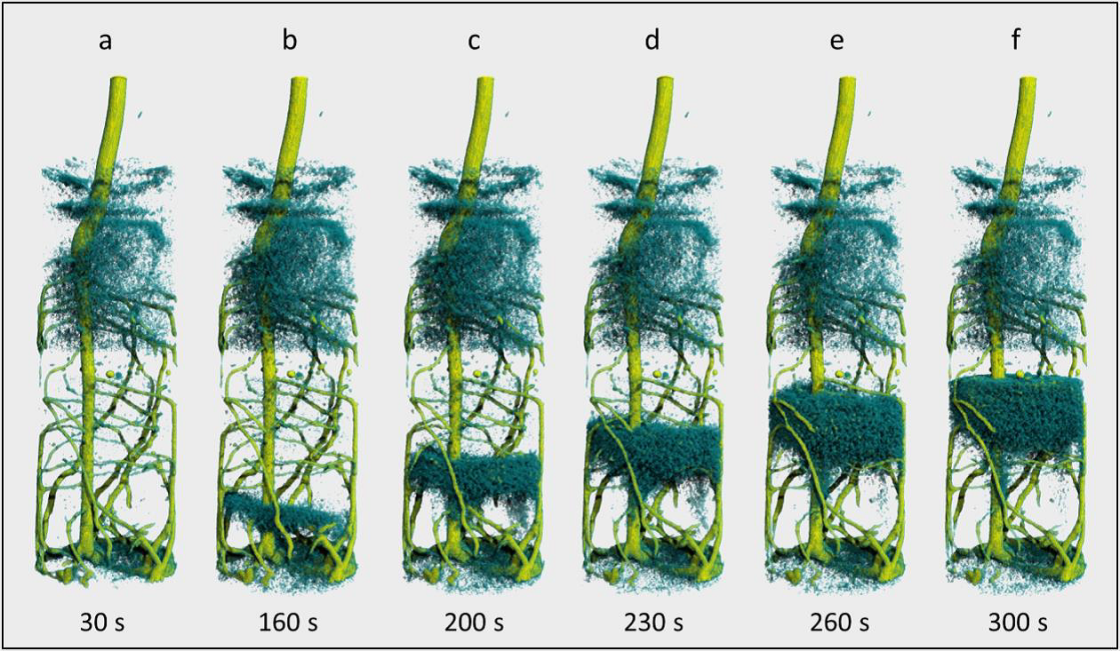
Sequential tomography of a lupin root (yellowish green) after deuterated water (D2O) was introduced from below. The rising water front (H2O, dark blue) is displaced by the D2O from below over the course of time. The complete sequence can be viewed as a video. Created by Christian Tötzke © University of Potsdam
2016: Storing energy with silicon thin films
Lithium-ion batteries could theoretically quadruple their capacity if their anodes were made of silicon instead of graphite. An HZB team observed for the first time in detail how lithium ions migrate into silicon. Their work shows that even extremely thin layers of silicon are enough to allow maximum charging with lithium. These insights are helpful for the design of good silicon electrodes. > to the News
Publication: ACSnano (2018). Doi: 10.1021/acsnano.6b02032
2016: Exotic material state: “liquid” quantum spins observed at ultra-cold temperatures
A team at HZB detected a so-called quantum spin liquid in a crystal of calcium-chromium-oxide. This is a novel state of matter. What is special about this discovery: the popular doctrine was that this quantum phenomenon should not even be possible in this material. Now there is an explanation. This work expands our understanding of condensed matter and could even be important in the future development of quantum computers. > to the News
Publication: Nature Physics (2016). Doi: http://dx.doi.org/10.1038/nphys3826
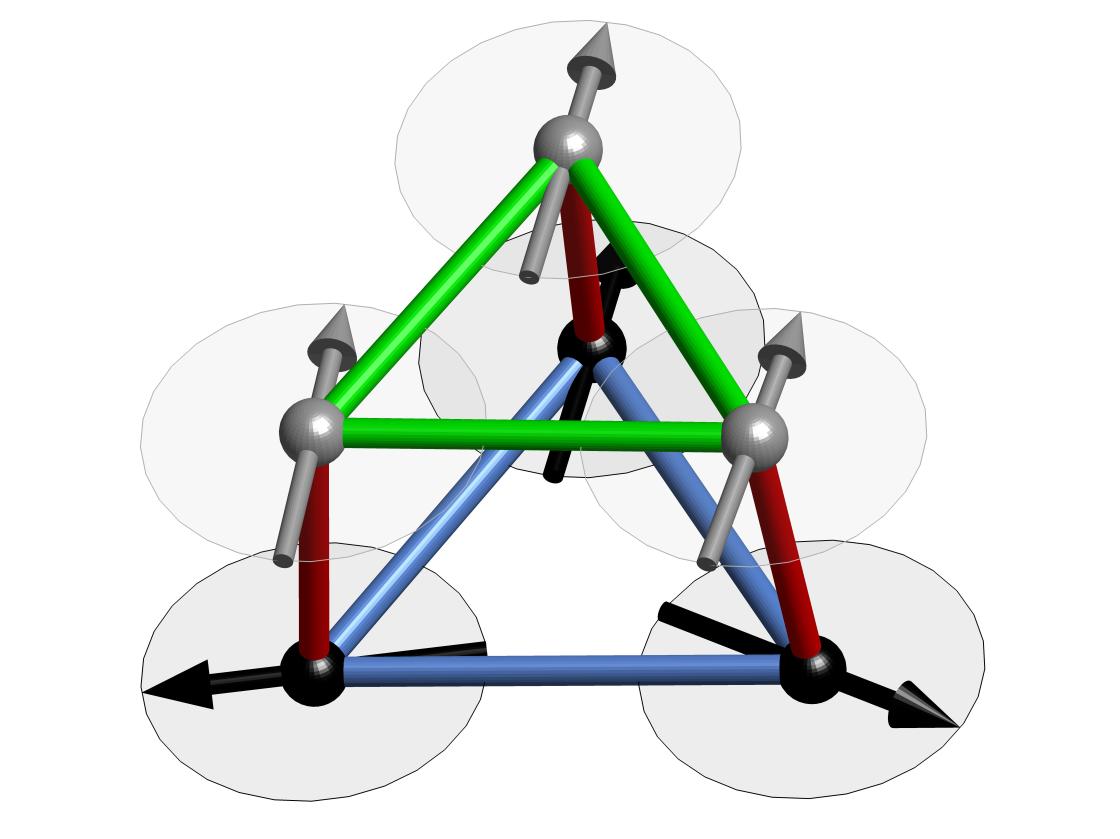
A section from the crystal lattice of Calcium-chromium oxide showing how the spins are subject to conflicting demands. In this ball-and-stick model, the green and red sticks connecting the atoms (grey and black balls) represent ferromagnetic interactions while the blue sticks represent anti-ferromagnetic interactions. Copyright: HZB
2015: Extraordinary magnetic structure and spin dynamics discovered in the magnetoelectric material LiFePO4
An HZB team decrypted the complex magnetic structure and the underlying spin dynamics in the magnetoelectric substance LiFePO4. Materials in this class are already being used for sensor technology and have great application potential in data storage and spintronics. With experiments conducted at the neutron source BER II of HZB, the researchers identified a new branch in the magnetic excitation spectrum in LiFePO4 and demonstrated a non-collinear magnetic structure. > to the News
Publication: Physical Review B (2015). Doi: 10.1103/PhysRevB.92.024404
2015: Crystalline structure and magnetism – new insight into the fundamentals of solid state physics
A team at HZB studied for the first time how magnetic and geometric arrangements mutually influence each other in crystalline samples with a spinel structure. The group had synthesised a series of mixed crystals of molecular formula Ni1-xCuxCr2O4 in which the element nickel was successively replaced by copper. In neutron scattering experiments at BER II, they discovered how this caused not only the crystal structure to change, but also new magnetic phases to appear. > to the News
Publication: Physical Review B (2015). Doi: 10.1103/PhysRevB.91.024407
2015: Neutrons and X-ray CT reveal how dental fillings can be made sturdier
There are not only different materials for dental fillings, but also different methods for preparing the filling material. Which preparation method will achieve the best result is not easy to find out. Liquid-filled pores reduce the sturdiness of the filling. A team from Copenhagen studied differently prepared dental fillings based on a glass ionomer cement using neutron tomography and X-ray photography at HZB. > to the News
Publication: Scientific Reports (2015). Doi: 10.1038/srep08972
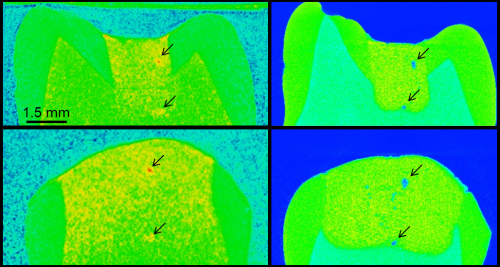
The neutron tomography images (left column) show how liquid becomes distributed in this dental filling, while the X-ray CT images (right column) show the microstructure and pores of the same sample. Analyses of these images reveal under what preparation method the least amount of water becomes trapped in pores.
2014: What happens to steel under stress?
Stainless steel is often expected to withstand extreme loads. In order to estimate when the material might succumb to fatigue, it is essential to know when and where applied forces will induce changes in the microstructure. Teams at HZB developed a new neutron imaging method for mapping the crystalline phases and their changes under loads inside the sample with high spatial precision. > to the News
Publication: Advanced Materials (2014) Doi:10.1002/adma.201400192
2012: What keeps joints young?
In joints, the bones are lined with cartilage and a layer of lipid membranes and move relative to each other in a liquid-filled capsule. This lubrication of the joint allows for pain-free mobility. At the neutron source BER II at HZB, researchers studied this situation in a model system made from synthetic lipid membranes and synthetic joint lubricants. Instead of hydrogen, they infused the joint lubricant with “heavy hydrogen”, deuterium, which provides a stronger contrast. In their setup, they observed how the distances between the individual lipid membranes of the “bone” coating increase as temperature rises, and how the surface of the artificial joint behaves under different pressures and shear forces. The results are of great interest to medicine and in the development of compatible joint prostheses.
Publication: Biochimica et Biophysica Acta (BBA) (2012) Doi: 10.1016/j.bbamem.2012.05.022
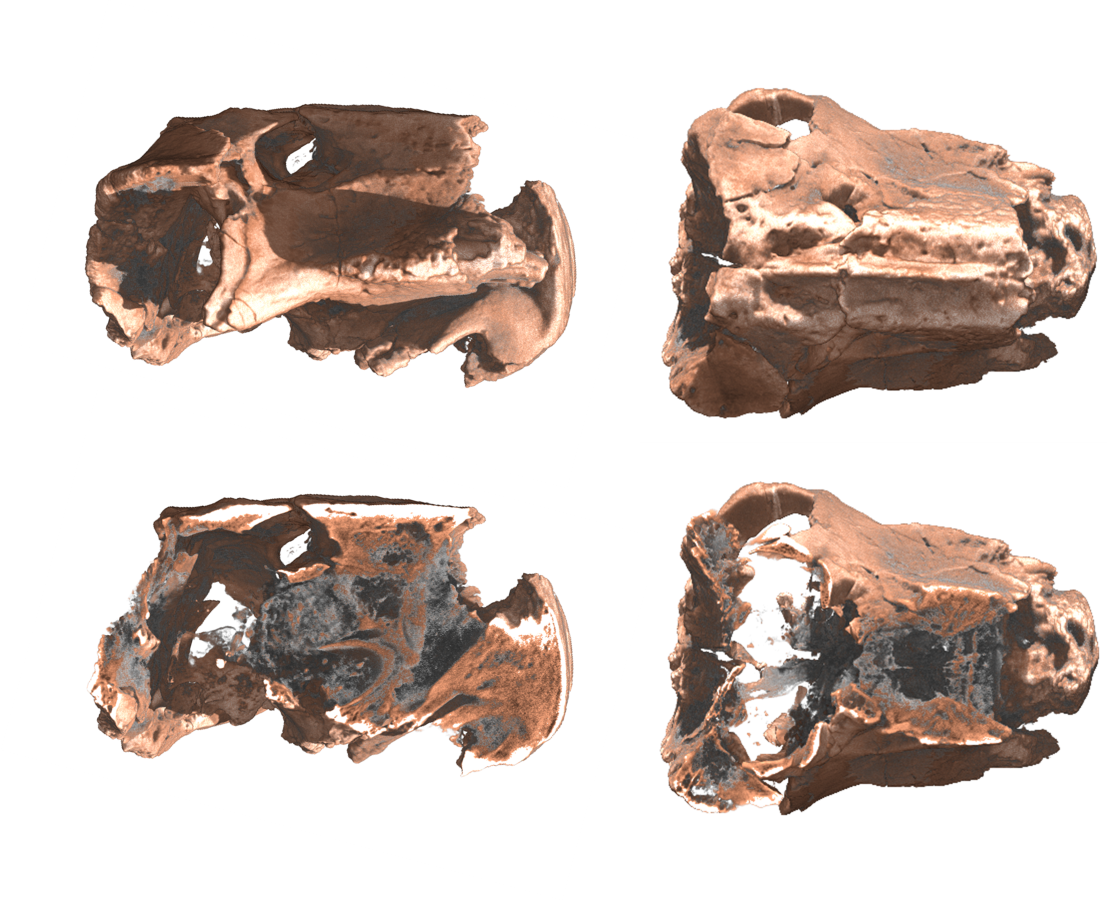
Neutron tomography showed that Lystrosaurus already possessed complex paranasal sinuses. Paranasal sinuses bring inhaled air to body temperature. Cold-blooded creatures do not need this, whereas warm-blooded creatures do. Therefore, contrary to previous assumptions, Lystrosaurus was likely a warm-blooded animal. This could have helped it cope better with large temperature fluctuations. That, in turn, could be why it survived the great mass extinction at the end of the Permian period.
2011: Surprising insight in the snout of a fossil
Scientists from the Berlin Natural History Museum studied a fossilised “dino skull” using neutron tomography at HZB. They did not have to free the skull from the stone, rather they were able to study it where it was, embedded within. They shone neutrons through the composite and were able to reconstruct a three-dimensional image, layer by layer. In particular, they were able to distinguish between relatively hard and soft components in the skull. Astonishingly, the researchers found traces of soft cartilage in the snout area. These traces of tissue would have certainly been destroyed of the skill had been dug out mechanically.
Publication: Acta Zoologica 92, 363-371 (2011)
2010: Imaging with neutrons: Magnetic domains pictured for the first time in 3D
Previously, it had only been possible to image magnetic domains in two dimensions. Now, for the first time, a team at HZB managed to create three-dimensional images of these domains deep within magnetic materials. They made this discovery using neutron tomography. > to the News
Publication: Nature communications (2010). Doi: 10.1038 /ncomms1125
2010: The Golden Ratio also exists in the quantum world
At BER II, scientists discovered properties of hidden symmetry in solid matter for the first time. The researchers found indicators of the Golden Ratio, well known from art and architecture, in the atomic arrangement of a cobalt-niobate crystal. > to the News
Publication: Science, (2010) Doi: RE1180085/JEC/PHYSICS
2009: Magnetic monopoles discovered in a magnetic solid
In 2009, a sensational discovery was made at HZB: physicists proved for the first time that magnetic monopoles can arise under very specific conditions. The north pole and south pole are separated far apart from each other, which normally ever happens! The exotic observation was made at temperatures close to absolute zero, inside a dysprosium titanate crystal. Using neutron scattering, the HZB researchers successfully showed that the magnetic moments inside the crystal arrange into so-called “spin-spaghetti”, with the north and south pole residing at the opposite ends of each noodle. The existence of such magnetic monopoles was predicted by quantum physics, but had never been observed before. > to the News
Publication: Science, Science Express (2009) Doi:10.1126/science.1178868
2008: Three-dimensional imaging – unique insight into magnetic fields
It is now experimentally possible to picture what magnetic fields look like inside solid, opaque materials. To gain this insight, a team shone polarised neutrons through a sample and reconstructed the image from the measured data. > to the News
Publication: Nature Physics (2008) Doi: 10.1038/nphys912
2007: A look inside a fuel cell:
How liquid water becomes distributed inside a fuel cell is critical to its efficiency and lifespan. Using neutron tomography at BER II, fuel cells can be analysed in operando, meaning while water and oxygen are in the process of combining to form water. Teams have also studied the influence of membranes and different electrodes in fuel cells.
Source: Applied Physics Letters (2007) Doi:10.1063/1.2734171
2006: How does cement become strong?
Cement first starts off as a soft and plastic mixture when mixed with water, and hardens into a very solid material over time. The reactions and interactions with the water molecules as it sets are decisive to its quality. Using quasi-elastic neutron scattering at BER II, a team studied a series of different cement mixtures. Based on the measured data, they were able to distinguish between three different processes that play a role in setting: some of the water molecules become chemically bound into the cement while another fraction becomes physically bound, and a third fraction does not become bound at all, but rather remains in the pores and capillaries of the cement.
Source: Journal of Physical Chemistry B (2006); Doi:10.1021/jp062922f
2006: How fast does a tomato drink?
Neutrons can be used to see how fast water rises inside a plant. Japanese scientists demonstrated this on a tomato seedling, which they studied at the neutron source BER II at HZB. They watered the plant with so-called “heavy” water, which stands out very clearly from ordinary water when examined with neutrons. The results could help to increase agricultural yields. Neutrons have a strong advantage over X-rays especially when the goal is to make light elements like hydrogen show up or to penetrate deep into metals. > to the News
2003: Bose–Einstein condensate: magnetic fields create an unusual state of matter
In an experiment at BER II, the magnetic properties of a crystal were used for the first time to create a Bose–Einstein condensate. The crystals used were of the unusual chemical compound TlCuCl3 (thallium-copper-trichloride). The exotic quantum physical material state arose when the crystal was introduced into a strong magnetic field of 14 teslas, and was detected with the help of neutrons. > to the News
Publication: Nature Vol. 423, 1 May 2003, pp. 62-65
2002: Alzheimer’s research at the V1 membrane diffractometer
Senile plaques are typically found as deposits in the brain of deceased Alzheimer’s patients. However, they are likely not the cause, but rather an effect of Alzheimer’s disease. It could even be that these plaques have provided protection by binding harmful proteins that would otherwise float around freely. It is more likely that smaller aggregates or monomers of the protein b-amyloid are toxic. At the neutron source BER II, a team studied whether b-amyloid can penetrate through the membrane of neurons. To find out, the element hydrogen in the protein was replaced by its isotope deuterium, whose position can be very precisely determined by neutron diffraction. The results allowed the position and mobility of the toxic protein to be determined and showed in exemplary fashion that b-amyloid can in fact penetrate into the membrane of neurons.
2001: Painting studied with neutrons: a surprise awaited behind the “Girl with a Bowl of Fruits”
Titian painted the “Girl with a Bowl of Fruits (Lavinia)” in 16th century Venice. On behalf of the art gallery, the painting was investigated with neutrons at BER II. The way the neutrons excite the pigments in the paint allowed the type of pigments to be identified. The study brought a surprise to light: although he painted the portrait in 1555, Titian had already used Naples Yellow for the girl’s gold-embroidered dress. The first known mention of this pigment in literature is from 1702! This shows how extensive the international network of the mighty market Venice was at the time.

